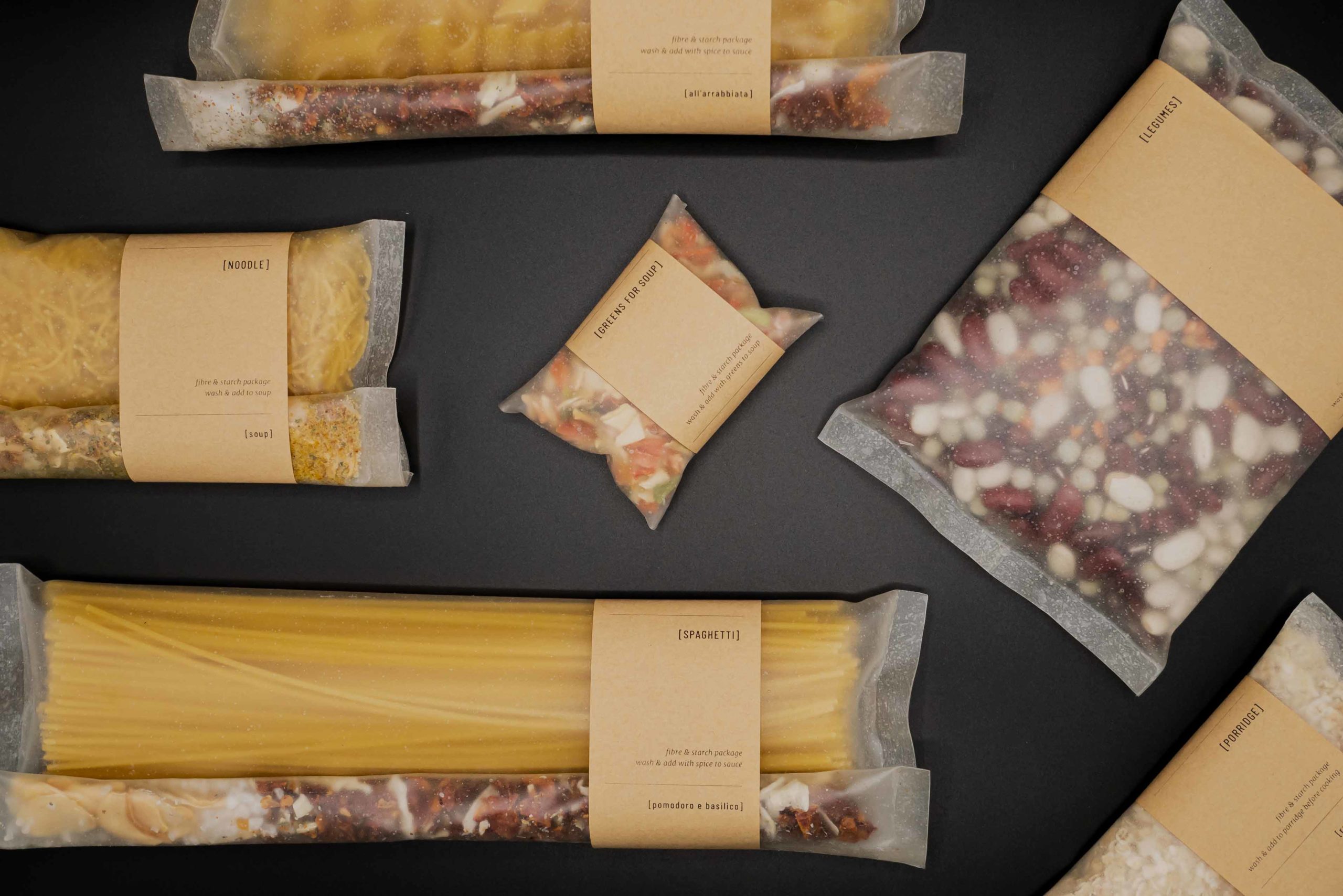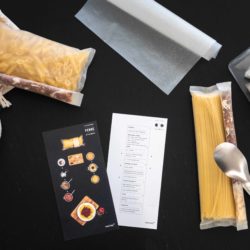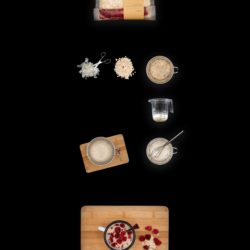Mattering
Description
The Meal Bag is an edible food packaging. Its ingredients are similar to those of paper but are edible. It is airtight and to a certain extent resistant to moisture. In hot water, the compound dissolves and can simply be added to meals. As one of its main ingredients is corn starch, it functions as a sauce thickener during cooking. Just like bread, it is a supplier of fibre and energy. Therefore, the packaging becomes part of the food chain instead of hazardous material. The material is edible, compostable, it weathers within a short period of time, it can be renewed and recycled. Therefore, plenty of possibilities for a closed cycle of materials are offered while at the same time being able to act spontaneously.What is the Topic?
According to the Federal Environment Agency, in 2017 approximately 107 kilograms of packaging waste was accumulated per private person. Only 49,7 percent of the plastic packaging was recycled. Despite this, it seems that particularly in the food sector more and more plastic packaging has been used. Alternative shop concepts, such as zero waste shops offer valuable guidance to a packaging-free daily life. Unfortunately, for many people, this concept cannot be easily integrated into their everyday working life. It requires advance planning as well as bringing along suitable containers for loose foodstuffs. The Meal Bag steers a middle course. It dispenses, protects the content from external influences and is airtight. Due to the fact that it is edible, it can be exploited after its first use. Before being processed, it is simply washed, just like vegetables and hence, forms the basis e.g. for sauces. Consequently, sustainable consumption can be implemented spontaneously. The consumer decides on how to close the material cycle. Important is that the contained components can circulate after its first use for the growth of the material. The concept of the Meal Bag can contribute to a further rethinking of one’s attitude to packaging as well as an increased appreciation of materials. The environmental awareness of those who cannot take the time for change can be increased.
Why does it look like this?
The Meal Bag consists of a foil which has been developed during the project “Mattering”. It is slightly transparent so that it is clear what it contains. Nevertheless, Meal Bags can be manufactured in colour and opaque. Moreover, a paper banderole can be used for additional labeling or as a protective layer when the product is touched. In doing so, no supplementary substances are needed. The Penne All’Arrabiata Meal Bag contains two separate chambers to prevent the noodles and the spices for the sauce from mixing. Thanks to the accompanying flyer, which includes a short sequence of pictures, it becomes quickly apparent how to cook Penne All’Arrabbiata.
What is special?
Used plastic packaging made from fossil fuels is a danger to entire ecosystems. Although a part of it is recycled, the bulk is often incinerated or shipped, with the materials finding their place on huge mountains of rubbish or ending up in the sea. All too often packaging waste ends up carelessly in the nature and has a negative impact on the environment. Since the Meal Bag is designed for a second use as food, it can contribute to avoiding packaging waste that is harmful to the system. Even in the case of materials, such as vaunted bioplastics (e.g. PLA) the complete decomposition in the wild can take up to 80 years. Only special bacteria cultures in industrial composting plants are able to exploit the substances quickly. The raw materials of the Meal Bag, on the other hand, are native substances which are not modified and, as tests have shown, decompose in the wild within a few weeks. If the consumer does not wish to use the packaging as food, it can be disposed of in organic waste or compost. Together with organic waste, it can finally be used for energy production in biogas plants and thereby help replace fossil energy sources. In compost heaps, the material is decomposed by the microorganisms living in it and recycled to valuable humus. This provides a fertile ground for new plants, which in turn convert carbon dioxide into oxygen through photosynthesis and thus can serve as new raw materials. Greenhouse gas emissions caused by transport routes of possible waste products can thereby be minimized and the development of new ideas is promoted. In addition, the used raw materials are variable. This ensures that the Meal Bag is produced regionally and that long transport routes and emissions are avoided. Furthermore, the product supports environmentally friendly behaviour of consumers and encourages them to deal with the waste load caused by packaging material and to think about the use of raw materials as well as their recycling.
What is new?
Own research showed that concepts for edible packaging products, that are based, for example, on algae, already exist. Wrapped around burgers, they can simply be eaten along with them. The Meal Bag, however, assumes an essential role in cooking the packaged meal and replaces part of the ingredients. By cooking and heating the packaging, possible inhibitions of eating it can be counteracted. Furthermore, any germs etc. that may have developed are killed by heating. The material has, apart from a light sweetness, hardly any taste of its own and offers a variety of uses in different recipes. The Penne All'Arrabbiata or the porridge recipe are only first examples of use. If the Meal Bag is recognized as a food, the raw materials can be used twice. The simplicity of the Meal Bag also makes it possible to reach consumers who are not actively involved in environmental and climate protection. The product starts where the implementation of change is difficult to achieve and makes sustainable consumption possible, whereby spontaneity and indulgence need not be sacrificed.




